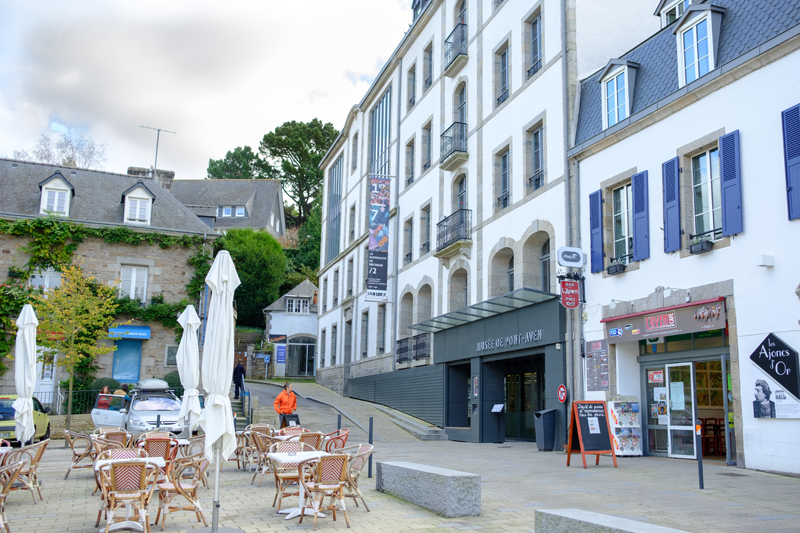

I love Brittany. I find there the wild, the primitive.
When my hooves resonate on this granite, I hear the muted,
dull and powerful tone that I am looking for in painting.
By offering them a remarkable quality of life, the innkeepers of Pont-Aven also played a key role in the development of what soon became a real artistic movement. Owner of the Hôtel des Voyageurs, Julia Guillou, nicknamed "Mademoiselle Julia" by her guests, took advantage of the presence of the painters and offered quality food at low prices to attract as many of them as possible.
Marie-Jeanne Gloanec, a great figure of Pont-Aven, owns a boarding house where Paul Gauguin once met Emile Bernard. As his work La Belle Angèle proves, these women also regularly served as models for paintings that today bear witness to the special atmosphere that prevailed in their establishments.
The interpretation of nature added to the desire to show one's feelings through the line characterizes the painting of the so-called "Pont-Aven School".
Opposing official painting, rejecting the Greco-Roman model, these painters were inspired by Japanese prints and medieval art. They favoured flat forms, rejected the traditional perspective to draw attention to the central subject from the outset, and advocated freedom.
Gauguin, the leader of this movement, although composed of independents, defended "the right to dare everything, dare colour, exalt nature, go to the essential". A few years later, with Paul Sérusier, he will be at the origin of a movement that will continue the work initiated in Pont-Aven: the Nabis.